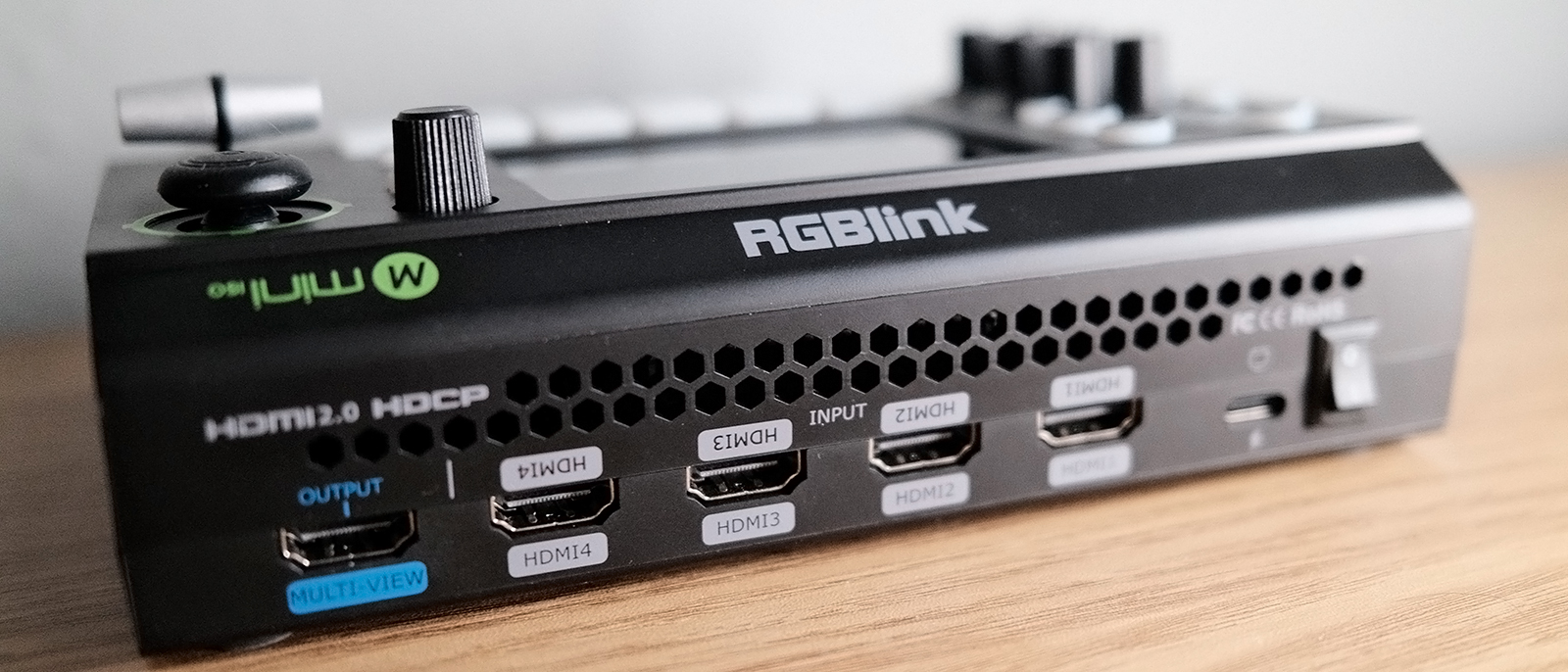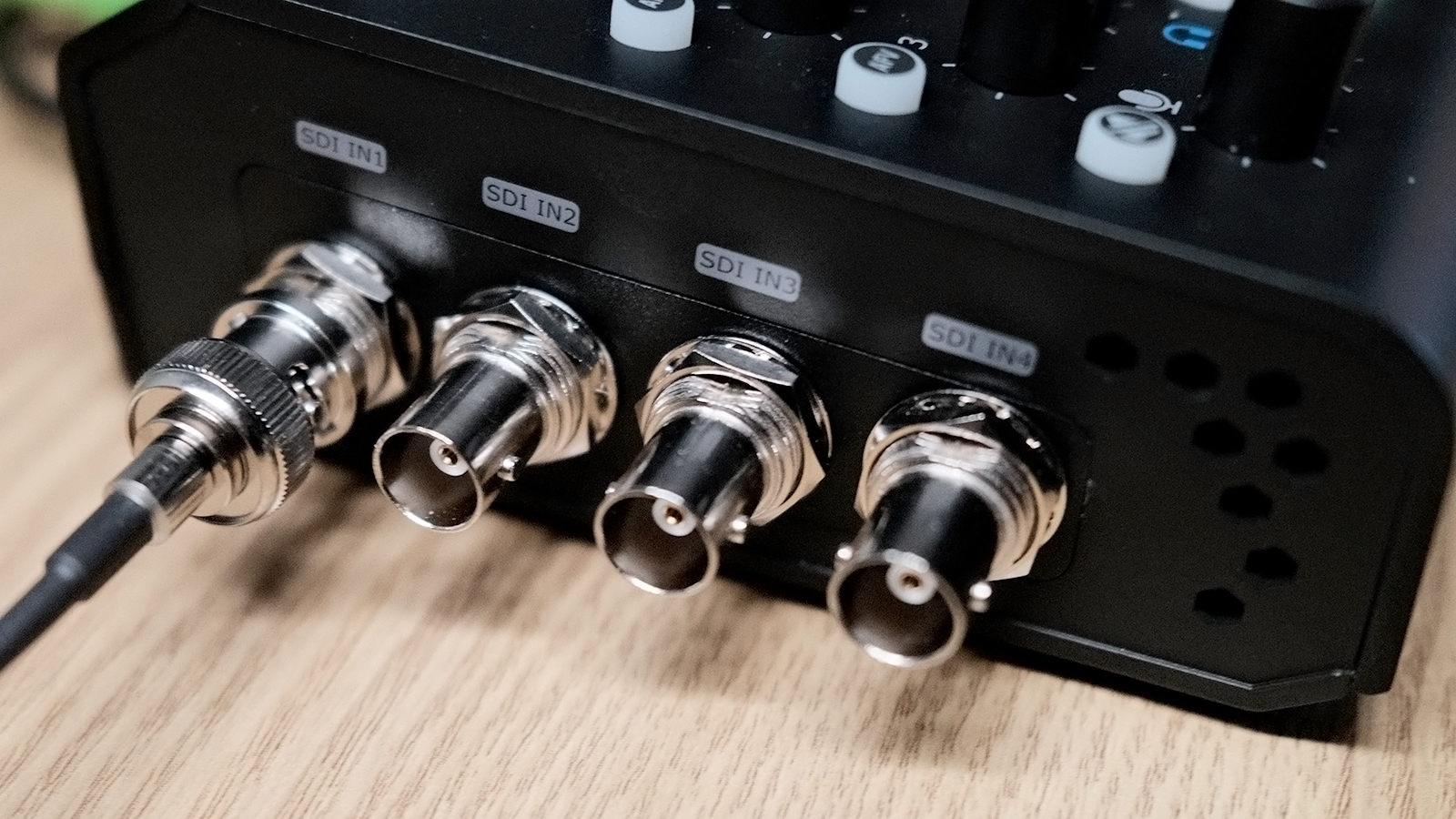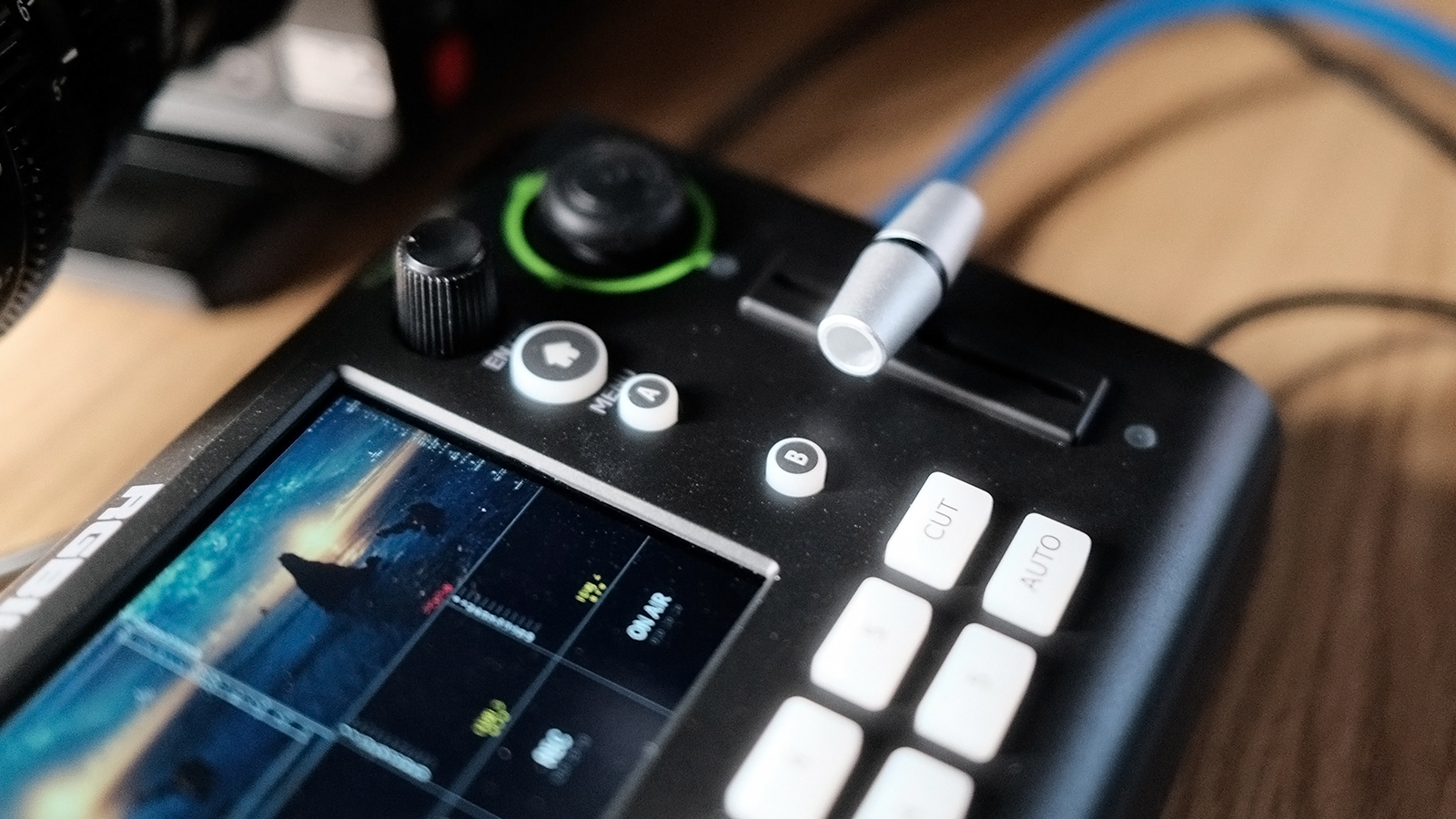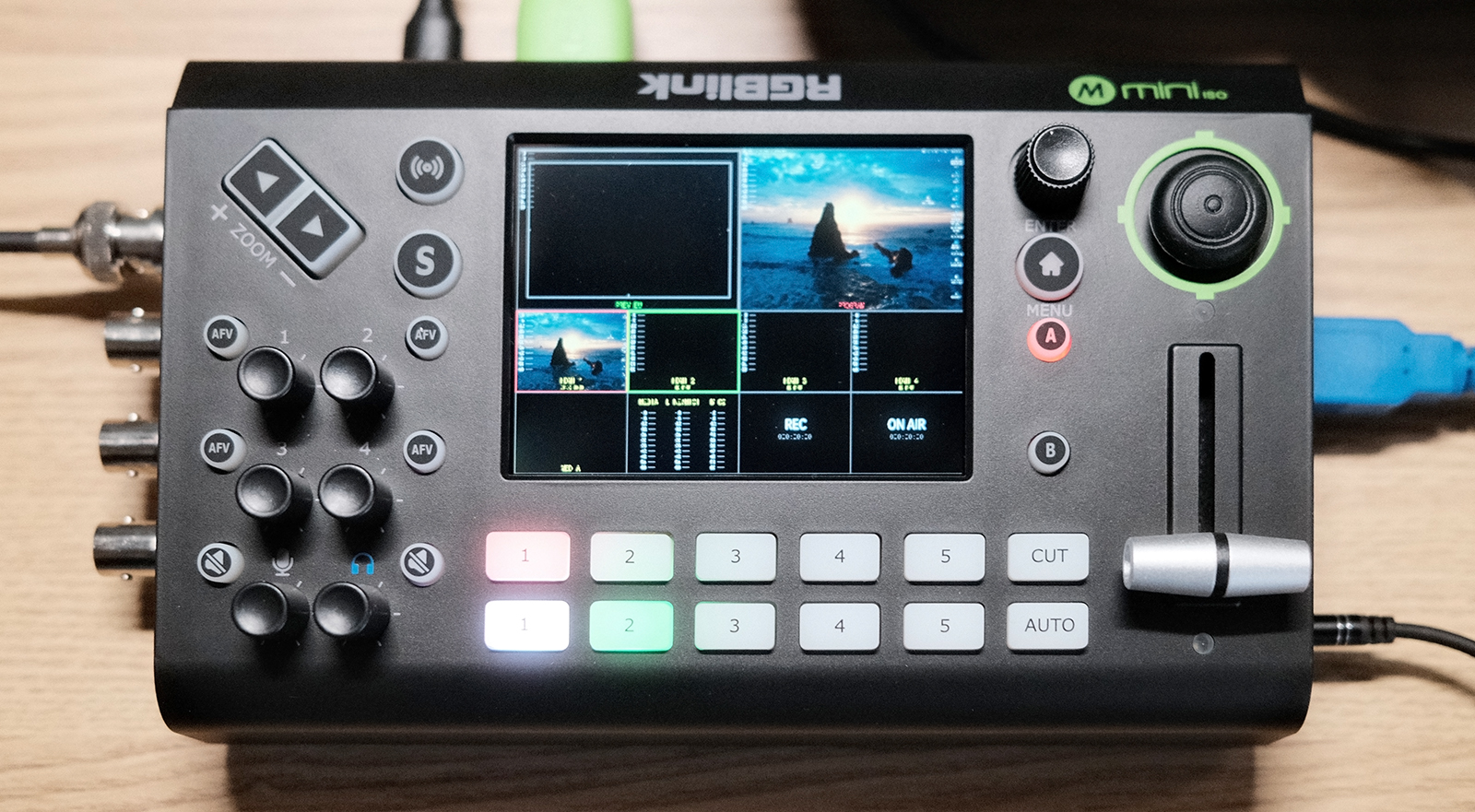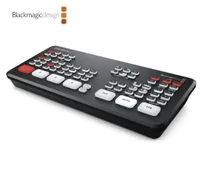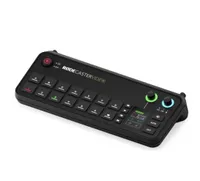Digital Camera World Verdict
An impressive feature set, alongside good options for IO make this a well rounded and very portable video switcher. Scene presets make it easy for regular streaming setups and PTZ camera control takes things up a notch for higher end productions.
Pros
- +
Portable yet rugged
- +
Great range of inputs and outputs
- +
Tactile or touchscreen interface
- +
Easy to use
Cons
- -
No XLR input
Why you can trust Digital Camera World
Video switchers used to be reserved for larger production houses, but they are now accessible to most, in part thanks to the sheer number of people taking YouTube production more seriously. Companies like RGBlink have been introducing devices that cater to this use case, at a more affordable price point, but are they any good? I’ve tested a few of these, and there is often somewhat of a compromise in their design, so I was keen to see what the mini ISO has to offer, as on paper it looks like a great option with some features that make it pretty scalable.
But what is a video switcher? In essence, it is exactly as the name would suggest. A device that takes multiple inputs and allows the operator to switch which incoming signal it sends to the output, but it gets more interesting than that, with things like transitions, audio mixing, and much more appearing on spec sheets. I’ve been testing the mini ISO for a few weeks, and this is what I’ve found…
RGBlink mini ISO: Specifications
Channels | 10 |
Inputs | SDI and HDMI 2.0 |
Interface | Physical and touchscreen |
Outputs | Ethernet, HDMI, USB-A |
xxx | xxx |
RGBlink mini ISO: Price
Available now at $599 / £599, which is a good price for such a well-featured device. The overall build quality and the feature list could suggest a higher price, making the mini ISO feel that much more of a bargain.
RGBlink mini ISO: Design & Handling
The RGBlink mini ISO ships with a few accessories. You get a USB-C to USB-C cable and power adapter. You can power this from a power bank too, but I’d say the use cases for that are limited. Maybe for doing a garden cooking show, where a power outlet isn’t available, or something similar.
You get a USB-A type 3 cable for connection to a host computer and a 3.5mm cable for audio, which is the split type for both phone and microphone.
The actual unit itself is very nicely made, although smaller than you might expect (the name should have probably made me realise this), at just under 200mm x 112mm x 60mm to the top of the controls. Although tiny, nothing feels cramped. There’s good room to get at all the controls, the channel buttons are a decent size, and the T bar is both nicely sized and weighted.
The mini ISO’s chassis is folded metal, lending a little confidence-inspiring heft to it, while also helping to keep it in place, once multiple inputs and the associated trailing cables are attached. There are 9 channel inputs on offer, split into 4 SDI ports down the side and 4 HDMI type 2.0 along the rear, that support 4K 60p max. There’s a USB-A port on the side for connecting a storage device for recording a production, plus can also be used as a webcam output for streaming. That split audio cable can be used for input in one of the two 3.5mm ports, while a second port is for output. Two HDMI 1.3 ports serve for monitoring purposes, and there’s a gigabit Ethernet port rounding off a pretty comprehensive set of IO.
The best camera deals, reviews, product advice, and unmissable photography news, direct to your inbox!
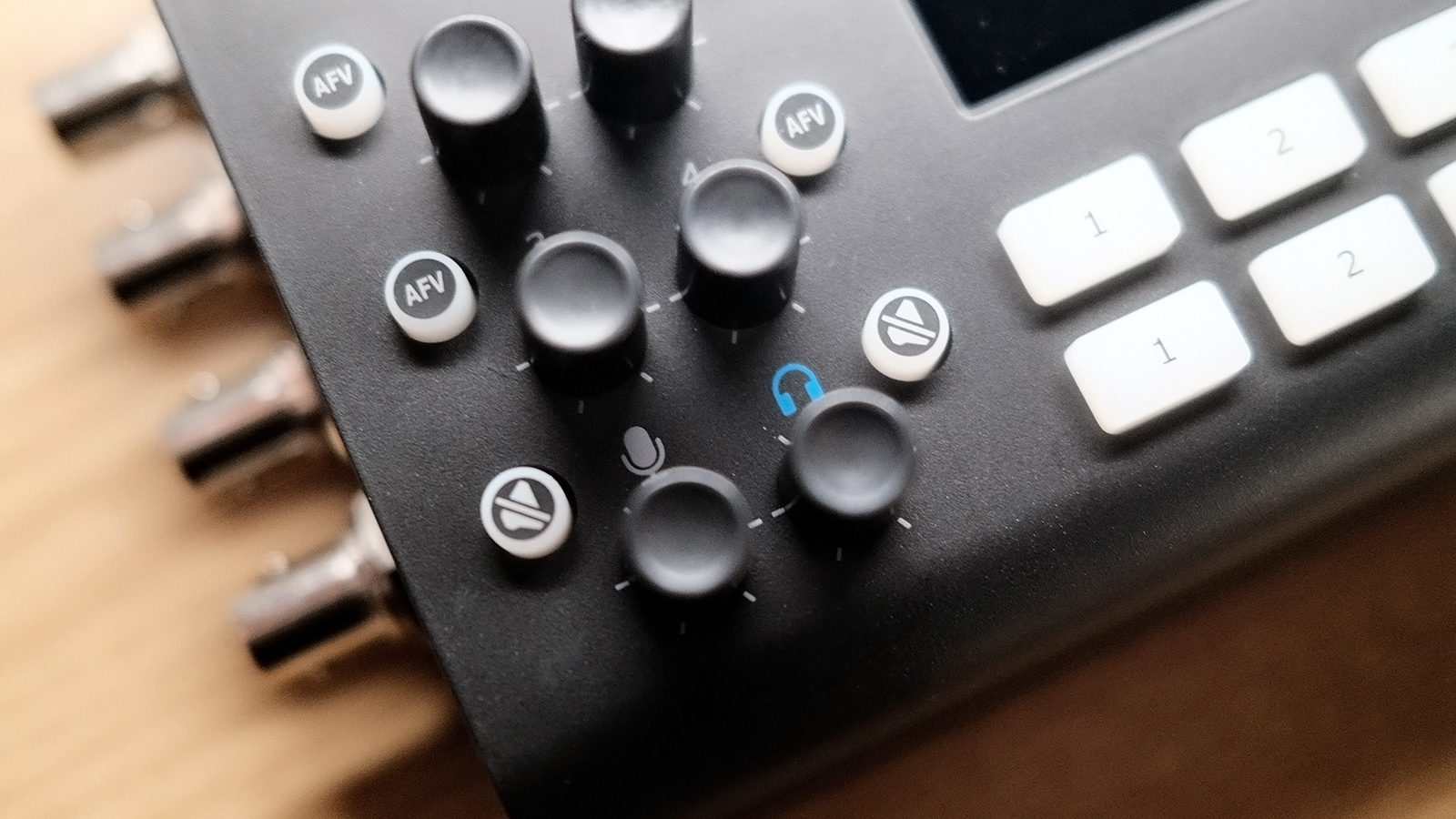
Then there’s the top face. This houses a joystick for PTZ camera control, the T bar, menu buttons, and channel selecting buttons that illuminate white, green, or blue to help you see what is being selected for various uses. Each HDMI input has an audio levels rotary knob alongside an AFV button, plus there are audio controls for incoming analogue audio and master output levels.
Then there is the screen. At 3.5” it isn’t all that big, but it is clear and bright. Maybe not bright enough for outdoor use, but perfectly usable even in a brightly lit studio. What’s more, it’s a touchscreen, so if you prefer navigating menus and operating this way, you are sorted. Overall, the build quality feels excellent. It’s robust and weighty while not being excessively so. I do wish RGBlink supplied a case for it, but for the majority of users, I imagine this will find a home on a desk and rarely be moved. It does seem a missed opportunity for added value for something so compact and portable, however.
RGBlink mini ISO: Performance
Let’s start with the screen. It’s quite a responsive touchscreen, and I haven’t once had a missed input.
Clarity, colour, and contrast are good too. I couldn’t find anything from RGBlink giving specifications for this, but it works fine for previewing channel content ready for switching, timing transitions, and basic operations. The menus are clear and concise, too. All very logical and reminiscent of what you get on field monitors, allowing you to keep an eye on your content while you make selections.
The same applies for the physical controls. Everything is clearly labelled and logical. A glance at the quick start guide is all that’s needed. Simply plug your sources in and you’ll be ready to go in minutes. One thing to note is that the SDI ports only support HD signals. That may work for your needs, but while the HDMI is good for 4K, SDI is preferable for longer cable runs, and not every device will have an HDMI output. My Pyxis, for example, doesn’t have HDMI, and I was hoping to use SDI. It hooks up fine, but you won’t get the full resolution, so I’ll need to look into using a converter box for this. Not a massive deal, but worth considering.
Once everything is hooked up, things couldn’t be simpler. Use the pots on the left to set audio levels, with the AFV letting you define whether audio switches automatically with video source changes or not. Then you can set previews and live sources using the two rows of illuminated buttons. These are great for an at-a-glance operation; White means there’s a source connected, green for preview and red for programme.
Beneath the hood, there are some extra features that are nice to have. The star here is chroma keying, which works surprisingly well. There are options for green or blue, with adjustments for spill. I was surprised at how good the results were, and overlaying keyed footage on top of a second source looks great.
You can hook up to a PTZ camera too, with remote control via the five-way joystick. I don’t have any PTZ cameras to try this with, but I have no doubt this would work as expected, especially when the rest of the mini ISO is so good.
Some switchers don’t simply jump from source to source upon selection, others have some predefined transitions, but the mini ISO goes the next step with the T bar. Once you have a clip live, you can preview the next source, then smoothly transition, at a speed you like, into that second source.
I found everything works really well here. Not just the physical device, but the workflow too. It’s really easy to navigate and to set things up just how you like. You may be live streaming (the mini ISo can stream to a max of four platforms concurrently) or doing a multicam recording for your channel. No matter what, it is a very intuitive process.
On top of that, there are scenes. These effectively are presets you can recall. If you do regular YouTube shows, with say a couple of different setups, then you can store them as scenes, meaning far less pre-production setup. Simply activate the correct scene and off you go. Very useful indeed. If you do a lot of these productions, then a permanent setup makes sense. Run your cables to your set and tuck the switcher somewhere close to hand. You can run the multiview HDMI to a larger monitor that is in your eyeline, to ensure results are as you want, and start recording or streaming.
Now, the only thing I wasn’t mad about was the output recording. The only option here is 16 Mbps 8-bit MP4. That may be fine for doing instructional videos or live streams, but it feels a bit lacklustre these days. Of course, you could take your HDMI output to another device and record there, but that adds complexity, cost, and logistics to what is really a very nice package. That said, the latency is very good at just 3 frames. Not bad for multicam processing, switching, keying, recording, and streaming. All at once.
My only other niggle is the lack of pro-level audio inputs. This isn’t a dealbreaker, especially if you’re connecting cameras via HDMI, but an XLR input would be nice. The form factor would have had to take a hit then, though, so it’s a trade-off I’m willing to make.
RGBlink mini ISO: Verdict
The RGBlink mini ISO is one of those devices that manages to quietly surpass expectations. It’s not perfect, as a few minor letdowns have shown, but it isn’t far off and is more than capable of delivering on the task at hand. The build, layout, and overall quality are excellent. Should you need a switcher that offers an intuitive experience, along with a few added benefits, then it is absolutely one to add to your shopping basket.
Features ★★★★★ | Very well rounded feature set, great for solo operators and small production houses |
Design ★★★★☆ | Nice layout, great menus and excellent built, let down only by the lack of an XLR input |
Performance ★★★★★ | Other than the slightly underwhelming output specs, performance is excellent and it’s impressive what has been squeezed into this little box |
Value ★★★★★ | An excellent all rounder, with extras, well worth the price tag |
Alternatives
Blackmagic Design’s Atem Mini Pro may have fewer features, but it’s a lot cheaper and very well made.
The Rode Rodecaster video has a similar feature set but does cost more. It can automate switching, which is useful.

Rob is Editor of ImagineFX magazine and also works as creative director for his own studio, Pariah Studios, producing 3D animation, film and VFX for a variety of clients.
He started his career as a photographer, slowing adding 3D, film and visual effects and film into his toolbag, working across TV, web and print, with clients ranging from Blackmagic Design and HMV to Games Workshop and Royal Mail.
When not on at his desk he can be found building and playing guitars or out in the wilderness with his dog.
You must confirm your public display name before commenting
Please logout and then login again, you will then be prompted to enter your display name.
